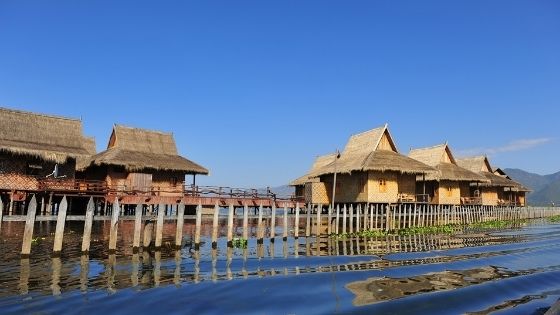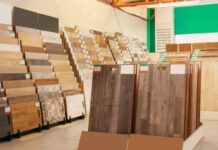Stilt houses are often built in areas that are prone to floods. These houses are known as stilt houses because they are built on stilts and are much higher than regular houses. The stilt of these houses, apart from keeping the flood damage in check, also helps keep vermin or pests at bay.


What is the Purpose Of a Stilt House?
Apart from the already established purpose of keeping flood damage in check, stilt homes are built in various regions for various other reasons.
For instance, stilt houses in the form of water villas are quite common in Assam to protect people from the impact of permafrost in Arctic regions. One of the best and effective ways to maintain the stability of permafrost is by building stilt houses. In Arctic regions, permafrost is almost 70%-80% water. So, if these homes are built on the ground level the heat that will radiate from the ground will melt the frost which will lead to the sinking of the entire property.
Stilt House: The Basic Materials Used
Materials required for constructing a stilt house include wood, cement, bamboo, stone, and mud in certain cases. Materials, however, depending on the region the house is being constructed in. While stilt houses are typically countryside, the popularity of modern-day and commercial stilt houses is gradually increasing. For instance, the stilt house in Queensland known as the Queenslander is a traditional residential setting, which was built from a single-detachable high-set house that was made from timber and iron roof, and was located at a different block.
In a similar manner, there has been an evolution in the traditional type of stilt homes across various regions. While some aspects of the stilt homes have changed over the years and some houses even reconstructed keeping in mind the modern-day life, there are still regions wherein traditional architectural aspects are retained.
Examples Of Stilt Homes In Different Regions Across The Globe
Propertygeek.in has listed a tabular presentation of the examples of stilt houses located in different regions across the globe;
| Region | Known as | Reasons for construction |
|---|---|---|
| Southern China | (Traditional)Diaojiaolou | Protection from venomous snakes, wild vegetation, and water stench. |
| Germany | Heliotrope houses | Harnessing from solar energy from water and sun. |
| The Philippines, Malaysia, Indonesia, and Singapore | Kelong (Traditional) | Used for fishing. |
| The Philippines | Bahay Kubo (Traditional) | Helpful in enduring the climate and the environment. |
| Chile | Palafito | Protection against hostile wildlife and neighborhood. |
| Hong Kong | Pang UK | Popular amongst the fishermen community and evolved from boathouses. |
| Papua New Guinea | Stilt house | Protection from the devastation caused by the sea. |
| Australia | Queenslander | Protection from floods, pests, and other termites. |
| Assam | Sang Ghar | Constructed in areas prone to floods. |
| Vietnam | Vietnamese stilt houses | Protection from floods. |
Bamboo Stilt Houses of India, Assam
In 2017 the state of Assam witnessed the most devastating floods. When the community got back on its feet and started its venture of reviving the place, one of the first things they did was to build stilt homes with the help of bamboo. These bamboo stilt homes are the best for flood-prone areas and are seen the most in Golaghat which is in Assam, India.
Bamboo is used to construct stilt houses in Assam as Bamboo is readily available in the area for use. In recent times, there has also been an integration of technology with local knowledge, which has helped the locals to come up with advanced bamboo stilt homes suitable for this particular region.
Stilt Houses: Final Thoughts
Stilt homes are not a new concept, it dates back to the prehistoric times and is a well-known thing all around the world. But what is new about them is the way they are designed, the modern architecture, and trendy styles are used to construct the stilt houses now. These houses are also best for subtropical climates and even coastal areas. The primary objective of stilt homes is to provide the homeowners a stable well-built home in a flood-prone area. Other than this, these houses help in proper ventilation and minimization of footprints.
FAQs: What Are Stilt Houses? A Complete Guide!
1. Are bamboo stilt houses safe?
Many people may not be aware of this but bamboo is much stronger than wood, which is what makes them popular even in areas prone to natural disasters, such as earthquakes and floods. Bamboo is not just safe but is a rather flexible, lightweight, and sustainable material for construction.
2. Can a stilt house provide protection from floods?
The basic objective of stilt homes is to protect from floods because they are constructed above the ground. The homes’ elevated structure allows the flow of water, without causing damage to the structure.
3. What does stilt level mean?
The ground position of the house is known as the stilt floor, this consists of the structural columns that help in supporting the superstructure of the house. It must be noted that a stilt house and a stilt floor are not the same.
4. What are the materials used in stilt homes?
Materials required for the construction of a stilt home are wood, cement, bamboo, stone, and sometimes mud. The materials required, however, vary from region to region.
5. What are the advantages of having a house on stilts?
Stilt houses are generally found in coastal and subtropical regions, such as Florida. These houses on slits have a lot of advantages added to them, to name a few – they have an open view, the slit houses provide stability when on unstable land, help with ventilations, and best of all; protect against floods.
6. Is it safe to have a stilt house?
Absolutely! By protecting the house from floods in areas near the water, they are driven away from the ground on less stable soil, keeping the house protected from soil subsidence as compared to the other traditional foundations of houses.
7. Are stilt houses cheap?
Not really, stilt houses cost a little more than the houses built on the ground, nevertheless, there are many benefits attached to stilt houses. For instance; they are eligible for lower insurance premiums (this doesn’t necessarily mean you shouldn’t have flood insurance), etc.
8. How much time does it take to build a stilt house?
This process of building a stilt house can take up to three and four months. However, in some cases, it can also take up to six months, depending on the construction delays, weather, and/or any requested customer design changes.


























